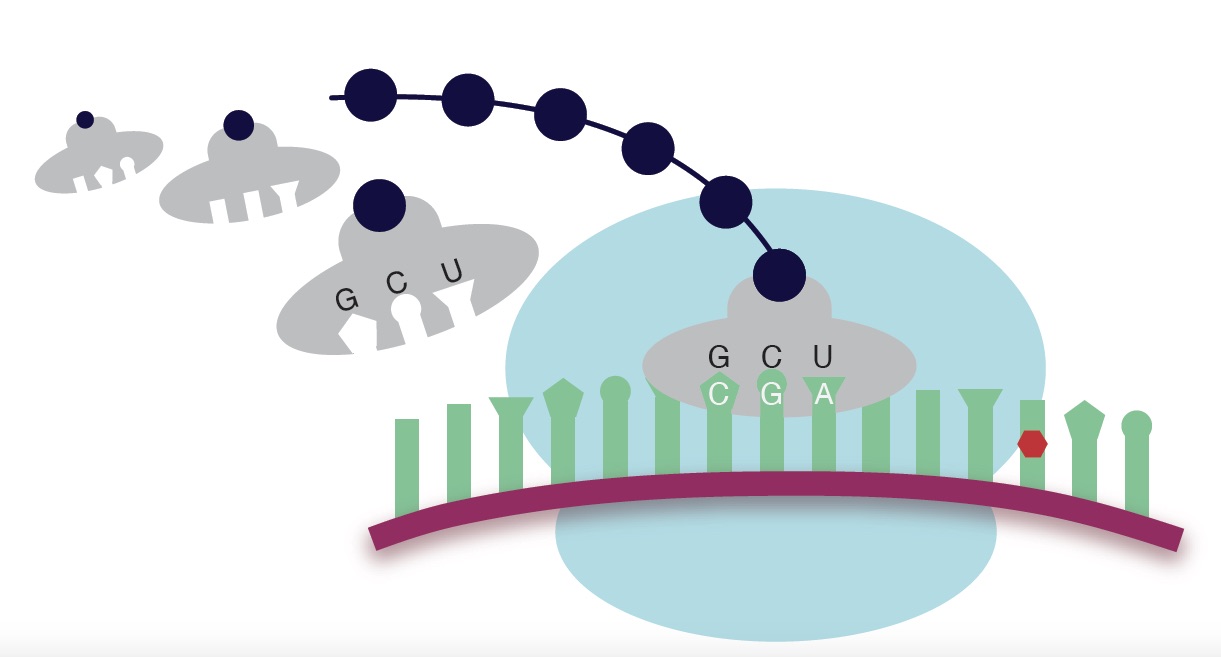Project description
The emerging research field of ‘Epitranscriptomics’ tackles one of the next challenges for
molecular biology: the understanding of how modifications of RNAs affect the function of RNAs
and of their vital role in cellular homeostasis. Such modifications of RNAs occur on all types of
cellular RNAs and are involved in the regulation of diverse biological processes. Misregulated
RNA methyltransferases have been found in multiple cancer types and are promising targets for
a new generation of anti-cancer drugs.
Recent breakthroughs have transformed our understanding of the epitranscriptome and allow us
now to interrogate RNA modifications at an unprecedented scale. The epitranscriptome
constitutes a new layer of (epi)genetic information and will thus change the way how we look at
RNA and also open new avenues to identify novel druggable pathways. We recently identified
two novel RNA methyltransferases and revealed their function in vitro and in animals creating
new models for human diseases (Ignatova et al., 2020a; Ignatova et al., 2020b).
The aim of the project, joint with the O’Carroll lab will be i) to identify potential methyltransferases,
and their targets and to (ii) unravel the role of the respective modification(s) by applying a
combination of in vitro and in vivo assays. We will build on the expertise in our laboratory in the
identification of novel modifying enzymes and in genome-wide mapping of modifications as well
as on the expertise of the O’Carroll lab in cellular manipulations and mouse and cancer models.
This project includes the possibility to be part of a dynamic and international team and to learn
state of the art technologies both in Munich and Edinburgh (such as novel NGS based approaches
to map RNA modifications and their bioinformatic analysis in low to single cells, as wells as ES
cell and mouse models, Crispr/Cas9/Cas13 mediated manipulations, advanced imaging
techniques, biochemical approaches and in vitro assays). It requires the motivation to develop
and execute the next breakthrough ideas in an interdisciplinary and scientifically stimulating
environment. We will employ diverse systems in particular mouse ES cells and human cancer
cells coupled with advanced omics approaches to gain insights in the mechanism of action of
RNA modifications and their cellular function. Since multiple studies have linked RNA modification
to cancer this project has the potential not only to reveal the impact of RNA modifications on RNA
function, but also to discover novel approaches to treat previous uncurbable diseases.

Relevant literature
Ignatova, V.V., Kaiser, S., Sook Yuin, S., Bing, X., Stolz, P., Tan, Y.X., Xim Tan, Y., Leng Lee,
C., Hoon Gay, F.P., Rico Lastres, P.,Gerlini, R., Rathkolb, B., Aguilar-Pimentel., A. Sanz-
Moreno, A., Klein-Rodewald, T., Calzada-Wack, J., Ibragimov, E., Valenta, M., Lukauskas,
S., Marscha, S., Leuchtenberger, S., Fuchs, H., Gaius-Durner, V., Hrabe de Angelis, M.,
Bultmann, S., Rando, O.J., Guccione, E., Kellner, S.M. and Schneider, R. (2020) METTL6
is a tRNA m3C methyltransferase that regulates pluripotency and tumor cell growth.
Science Advances, 6, eaaz4551
Zoch, A., Auchynnikava, T., Berrens, R. V., Kabayama, Y., Schöpp, T., Heep, M.,
Vasiliauskaitė, L., Pérez-Rico, Y. A., Cook, A. G., Shkumatava, A., Rappsilber, J., Allshire,
R. C. and O'Carroll, D. (2020) SPOCD1 is an essential executor of piRNA-directed 1 de
novo DNA methylation. Nature 584, 635-639.
Ignatova, V.V., Stolz, P., Kaiser, S., Gustafsson, T.H., Rico Lastres, P., Sanz-Moreno, A., Cho,
Y.L., Amarie, O.V., Aguilar-Pimentel, A., Klein-Rodewald, T., Calzada-Wack, J., Becker,
L., Marschall, S., Kraiger, M., Garrett, L., Seisenberger, C., Hölter, S.M., Borland, K., Van
De Logt, E., Jansen, P., Baltissen, M.P., Vermeulen, M., Wurst, W., Gailus-Durner, V.,
Fuchs, H., Hrabe de Angelis, M., Rando, O.J., Kellner, S.M., Bultmann, S. and Schneider.
R. (2020) The rRNA m6A methyltransferase METTL5 regulates pluripotency and
developmental programmes. Genes and Development , 34, 715-729.
Morgan, M., Much, C., DiGiacomo, M., Azzi, C., Ivanova, I., Vitsios, D. M., Pistolic, J., Collier,
P., Ventura De Oliveira Moreira, P., Benes, V., Enright, A. J. and O'Carroll, D. (2017)
mRNA 3ʹ uridylation and poly(A) tail length sculpt the mammalian maternal transcriptome
Nature 548, 347-351.
